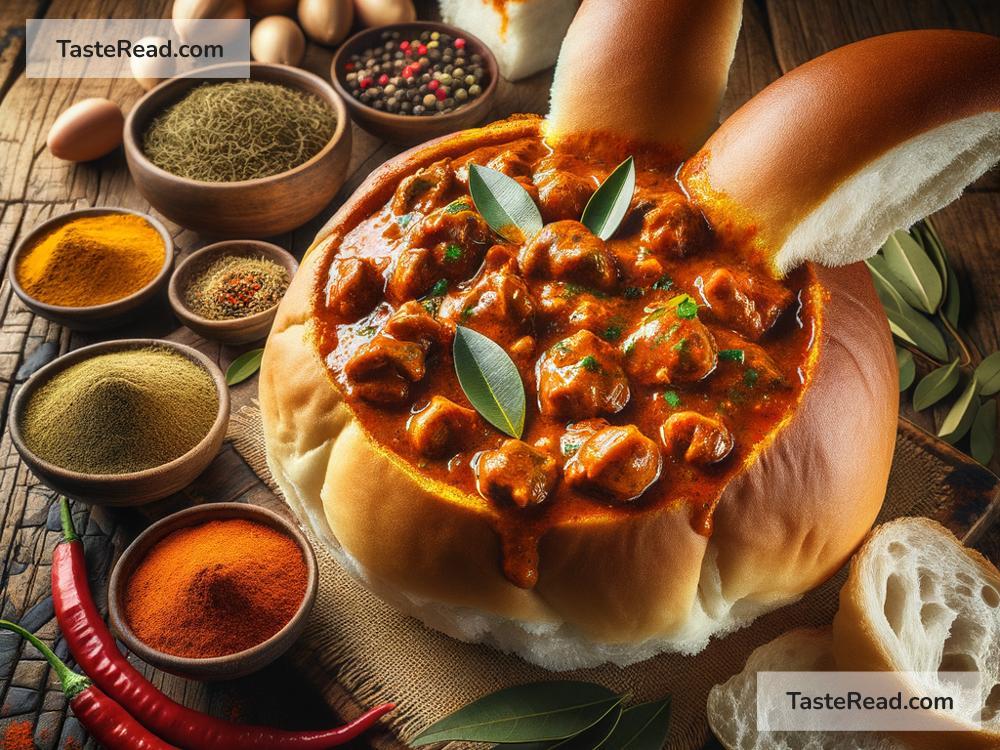Title: Unrapping the Delightful Story Behind South Africa’s Bunny Chow
If you ever find yourself wandering through the buzzing streets of South Africa, among the rich tapestry of smells, sounds, and sights, you’ll stumble upon an alluring culinary marvel that’s as unique as it is delicious. This isn’t just any food; it’s the legendary Bunny Chow. But what exactly is this enticing dish, and where did it come from? Let’s dive into the delicious history of South Africa’s beloved Bunny Chow and discover its origins.
At its core, Bunny Chow is simple yet brilliantly conceived. Imagine a hollowed-out loaf of bread filled generously with spicy curry, ready to enchant your taste buds. The choice of curry can vary – be it chicken, beef, or vegetarian options like beans or lentils. The magic of Bunny Chow isn’t just in its sumptuous fillings but also in its rich history and cultural significance.
The Bunny Chow’s journey started in the Indian community of Durban, South Africa, around the 1940s. However, like many historical dishes, its exact origin is wrapped in layers of tales and folklore, making the true story elusive. What is clear, though, is that the Bunny Chow was born out of necessity and innovation in a time of apartheid, where racial segregation laws restricted certain aspects of societal interaction, including dining in restaurants for the Indian labor force.
One popular theory suggests that Bunny Chow was a clever workaround for Indian workers who were not allowed to enter cafes or restaurants due to apartheid-era legislation. Thus, the ingenious solution was for take-away food vendors to serve curry in hollowed-out loaves of bread, which could easily be handed through back windows or doors, allowing workers to enjoy their meal on the go without the need for utensils, which were not always available.
But why “Bunny”? This name has puzzled many, but a most accepted explanation leans on etymology. It’s believed to be a twist on the word “bania”, a term used to describe Indian merchants. Over time, “bania chow” might have evolved into the more affectionate “Bunny Chow”.
Bunny Chow is more than just a meal; it’s a symbol of resilience and adaptability. It showcases how culinary invention can flourish under restrictions, creating something deeply loved and shared across cultures today. What was once a practical solution for marginalized communities has transcended its origins to become a national treasure, relished by all layers of South African society and beyond.
The cultural impact of Bunny Chow is significant, embodying the melting pot of South African culture. It represents a blending of Indian cuisine with South African ingredients and tastes, embodying the spirit of unity and diversity. Served in quarters, halves, or full loaves, Bunny Chow is about sharing and community, bringing people together over a hearty, comforting meal.
Making a perfect Bunny Chow is an art in itself, balancing the moisture of the curry with the integrity of the bread, ensuring it’s satisfyingly soggy but never falling apart. The bread’s role is not merely as a container but as an integral component of the dish, soaking up the rich, flavorful sauces, making the last bites as delightful as the first.
Today, Bunny Chow has gained international recognition, tantalizing taste buds beyond South Africa’s borders. Food enthusiasts and curious travelers alike are drawn to its intriguing name, humble appearance, and the explosion of flavors it offers. It’s also become a dish celebrated in culinary competitions and food festivals, showcasing the innovative spirit of South African cuisine.
For those looking to dive into the world of Bunny Chow, you don’t have to catch the next flight to Durban. The beauty of this dish lies in its simplicity and adaptability. With a loaf of bread, your choice of curry, and a bit of culinary courage, you can bring a taste of South African history and culture right into your kitchen.
In conclusion, Bunny Chow is more than just food; it’s a testament to human creativity and the power of cuisine to bridge cultural divides. It stands as a flavorful reminder of South Africa’s multicultural heritage, a delicious legacy of the Indian community’s contributions to the country’s culinary landscape. So, next time you bite into a scrumptious Bunny Chow, remember the rich, complex history behind this deceptively simple dish. Who knew history could taste so good?


